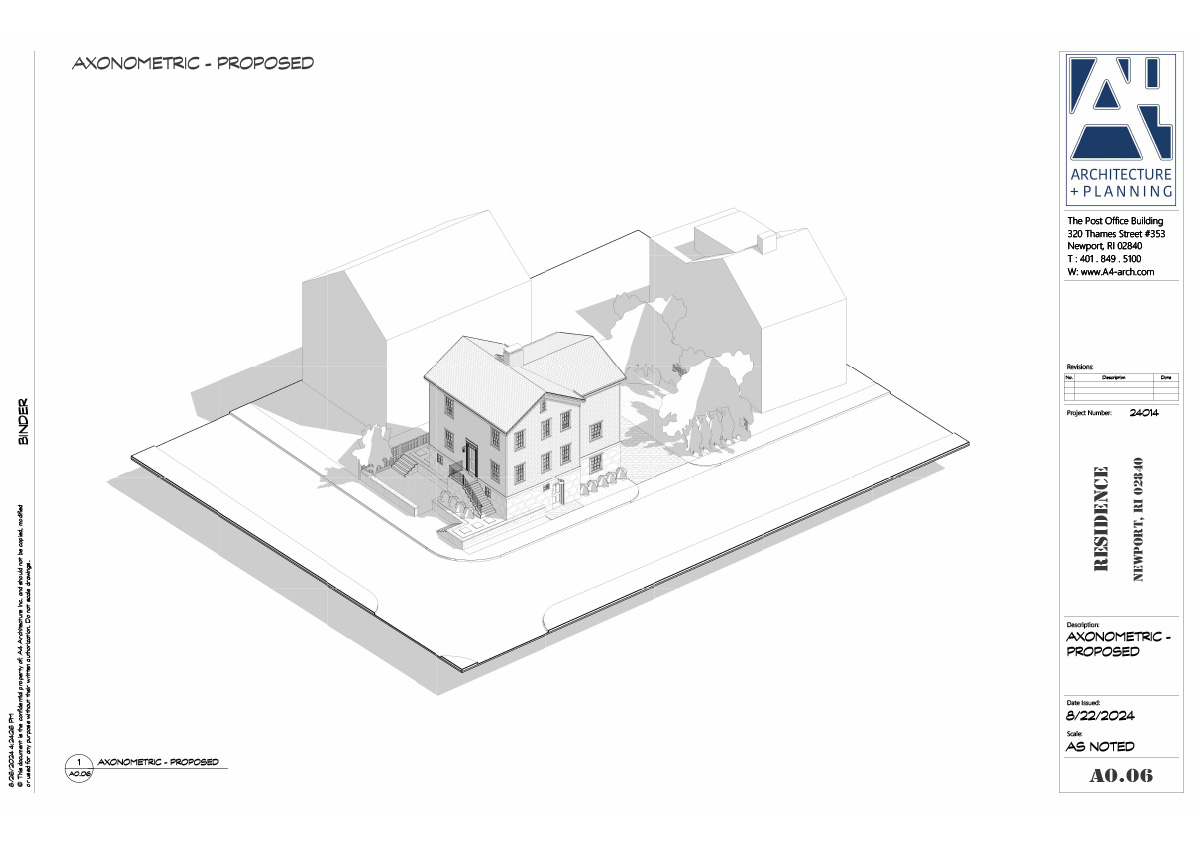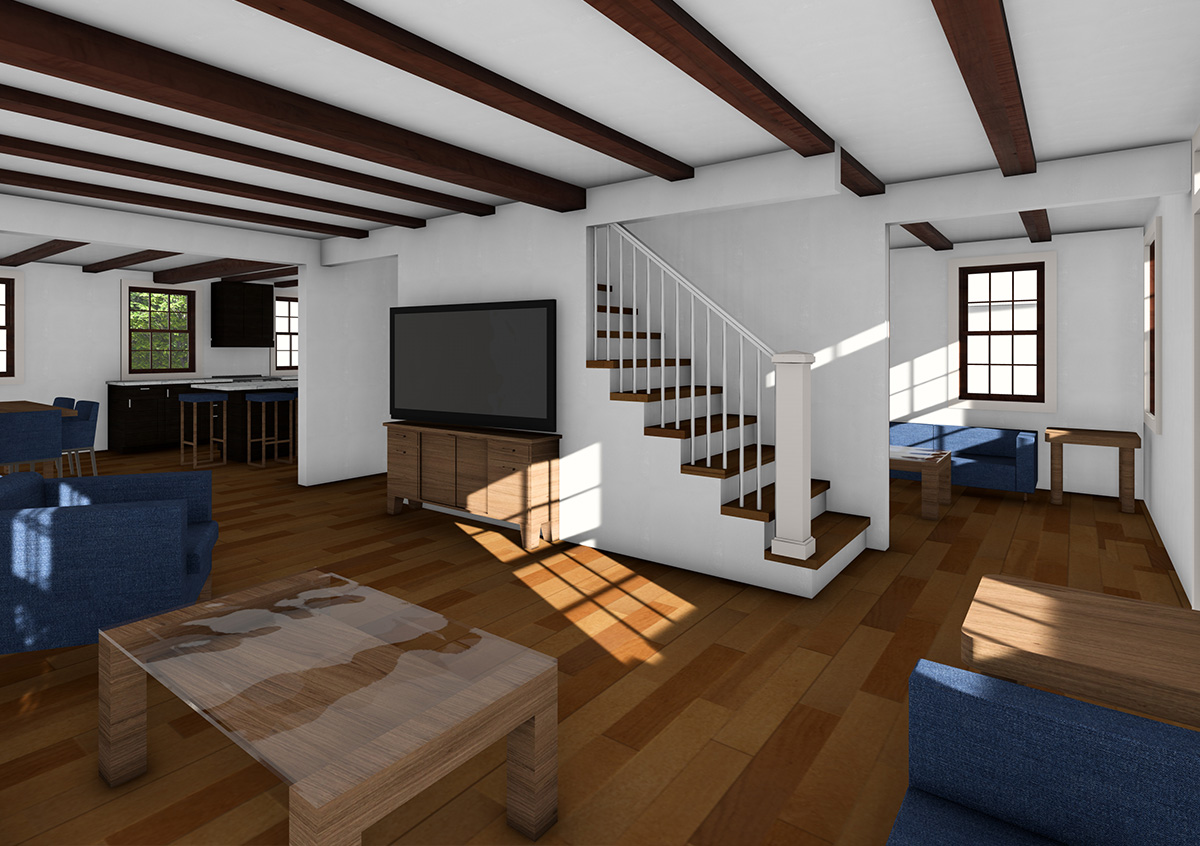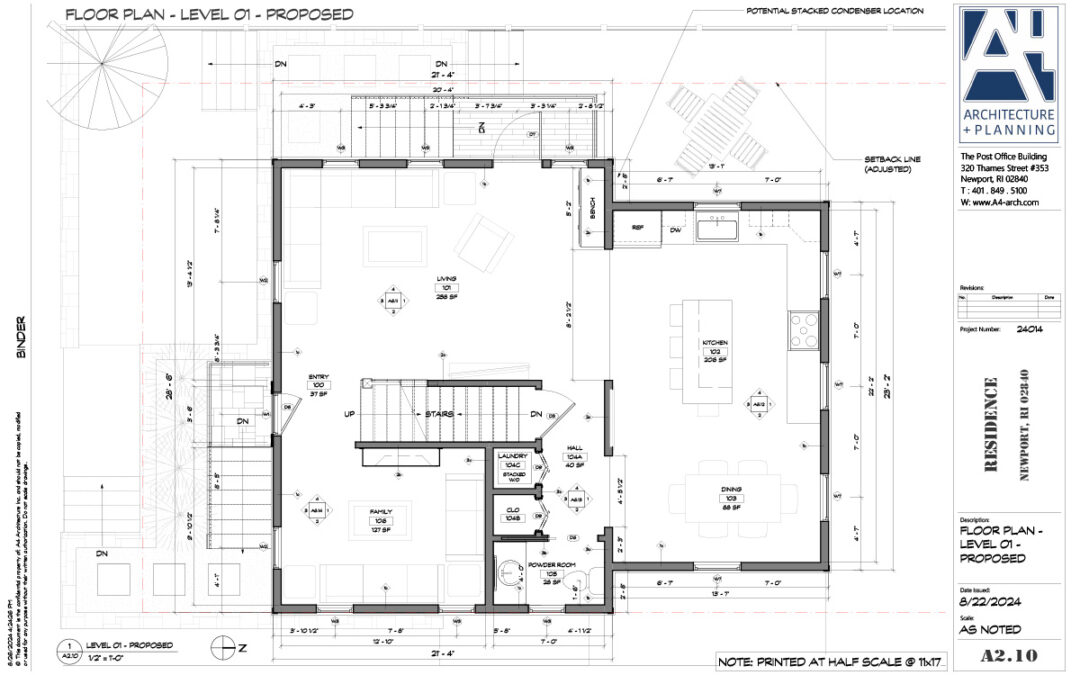Proposed First Floor Plan of a Current Residential Project (Newport, RI)
Computer-Aided Drafting (CAD) has been a cornerstone of architectural and engineering design since the 1990’s. It revolutionized the industry by replacing traditional hand-drafting methods with digital tools. This streamlined processes, and improved accuracy and coordination. However, as technology has advanced, a new paradigm has emerged: Building Information Modeling (BIM). BIM represents a significant leap forward, offering a more comprehensive and collaborative approach to design and construction.

Proposed Axon of a Current Residential Project (Newport, RI)
The origins of CAD can be traced back to the mid-20th century when early computers began to be used for engineering calculations. In the 1960s and 1970s, CAD systems emerged as specialized software for creating technical drawings. These systems initially focused on 2D geometry, but as hardware capabilities improved, 3D modeling became possible. CAD tools allowed designers to create, modify, and analyze designs with greater precision and efficiency than ever before.
While CAD was a groundbreaking development, it had limitations. It primarily focused on the creation of individual drawings and lacked a holistic view of the design process. Information was often siloed within different disciplines, leading to potential inconsistencies, conflicts, and errors. Additionally, CAD models were primarily visual representations and lacked the ability to store and manage data beyond geometry.

Proposed Axon Render of a Current Residential Project (Newport, RI)
BIM, however, goes far beyond simple drafting and visualization. It is a digital representation of a building or infrastructure project that incorporates information about the design, construction, and operation of the asset. BIM models are not just drawings; they are intelligent databases that contain a vast amount of data, including geometry, materials, properties, and relationships between different components.
One of the key advantages of BIM is its ability to facilitate collaboration among different stakeholders. By sharing a central model, architects, engineers, contractors, and other project team members can work together more effectively, reducing misunderstandings and ensuring everyone is on the same page. BIM also enables real-time updates and coordination, allowing for a more efficient and streamlined design process.

Proposed Render of a Current Residential Project (Newport, RI)
Secondly, because BIM uses three-dimensional representations of a proposed construction, photorealistic renderings and animations can now be derived from the model. This allows owners, financiers, appraisers, and other non-technical team members to understand what the building will look like and hope it will operate from the early stages of the design process. That allows for their input in a timely way when their ideas and contributions to the program and process can still be integrated in an affordable manner.
Another significant benefit of BIM is its potential to improve project outcomes. By analyzing the BIM model, designers can identify potential conflicts and issues early in the design phase, saving time and money. BIM can also be used to simulate the construction process, helping to optimize workflows and reduce waste. Additionally, BIM models can be used for facility management, providing valuable insights into the operation and maintenance of buildings.

Proposed Interior Render of a Current Residential Project (Newport, RI)
While CAD was a revolutionary tool in its time, BIM represents a significant advancement in the field of design and construction. By providing a more comprehensive and collaborative approach, BIM offers numerous benefits, including improved efficiency, accuracy, and project outcomes. As technology continues to evolve, BIM is likely to become an even more essential tool for architects, engineers, and construction professionals. Using the old methods that were commonly used even twenty years ago feels hopeless antiquated at this point so as you reach out to potential architects inquire about the firm’s BIM capabilities and resources as that will be an important factor in the success of your future design project.
Ross Sinclair Cann, AIA, LEED AP, is an historian, author, educator and founding Principal of A4 Architecture Inc. He holds architectural and history degrees from Yale, Cambridge and Columbia Universities. He is a former member of the American Planning Association.
